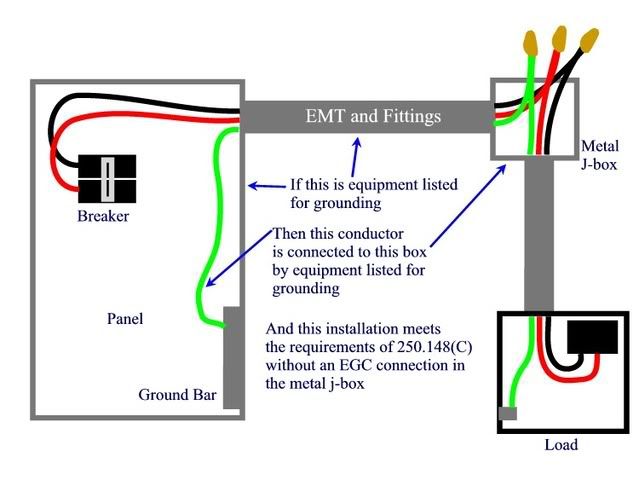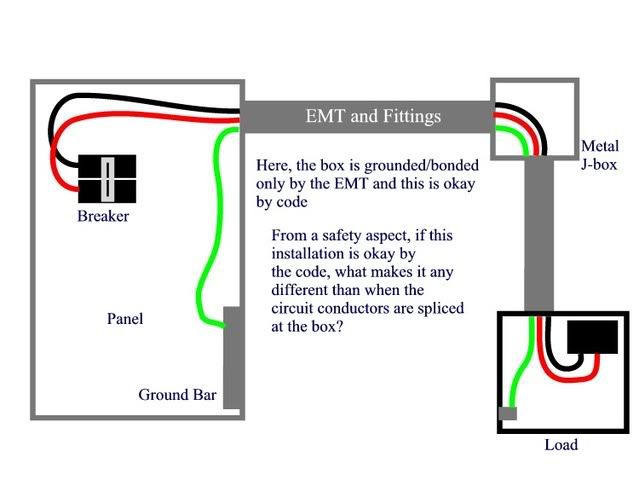frizbeedog said:
You being the minority opinon, have weathered the debate well.
I appreciate that.

frizbeedog said:
However.....your scenario of where you think the present wording is confusing does not hold water in pratical application. Being convinced as you are that the conduit fittings are the method that was intended for this article.
Practically speaking, there would be no need for this article if it wasn't refering to a wire type equipment grounding conductor. Try reading it closely without thinking about a wire type equipment gounding conductor. Kind of like asking someone to not think of a pink elephant. Can't be done.
Several comments:
1) If the CMP intended 250.148(C) to apply only to wire-type EGCs, then they would have written it that way. They differentiate between raceway EGCs and wire EGCs in other sections, so why not here? I trust that the CMP members are highly skilled and competent, and that they labor for days to get the wording just right, and to mean exactly what they say. If we have to assume what they are intending, then we pretty much have carte blanche to make assumptions about every word written in the code.
2) Okay, we have to ask ourselves why the CMP added "equipment listed for grounding" to 250.148(C). The reason IMO for the change in 2008 is because they discovered the mistake in the 2005 Code as follows: 2005 NEC 250.148(C) -
A connection shall be made between the one or more equipment grounding conductors and a metal box by means of a grounding screw that shall be used for no other purpose, or a listed grounding device.
This says that the EMT and fittings are not suitable for grounding the box because EMT and fittings, to me, is not
a listed grounding device. Keyterm is
device. An EMT fitting is equipment, not a device, according to Art 100 definitions. So by the 2005 code, to meet the requirements of 250.148(C), the EMT by itself could not be used to ground the box unless we used a grounding bushing and a jumper wire, where we would consider the grounding bushing to be a device.
So, to alleviate the mistake, the CMP added "equipment listed for grounding" to the methods of connecting the EGC or EGCs to the box. Now with the correction, the section includes EMT and fittings as a permissible connection.
You may think this is "way out there" but does anyone have a better explanation of why they added "equipment listed for grounding"?
frizbeedog said:
I don't see a loophole here.
Yes, no loophole. They said exactly what they mean. Equipment listed for grounding can be used to connect the one or more EGCs to the box.



